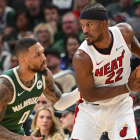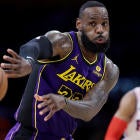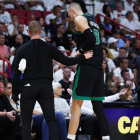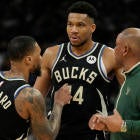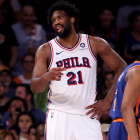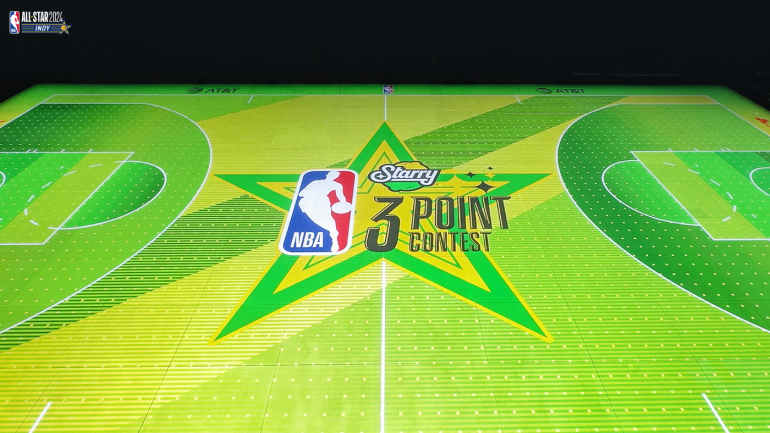
The NBA In-Season Tournament ended almost two months ago, but the league isn't done with innovative court design. On the Friday and Saturday of 2024 All-Star weekend in Indianapolis, the league will use an LED court, designed by German company ASB GlassFloor.
The court will display all sorts of visuals, including live replays, real-time stats, player-tracking graphics and animations that punctuate key moments during All-Star Saturday Night (Feb. 17) and the All-Star Celebrity Game (Feb. 16) at Lucas Oil Stadium.
"It's basically limitless," Carlton Myers, the NBA's head of live production and entertainment, said. "It's essentially a huge television screen. So any graphics that you want, any design that you want, you can put it there."
During the 3-point competition, for instance, when a player is shooting on one side of the court, "on the other side of the court we'll have interactive graphics, stats and whatnot," Myers said. "Things that you would normally see on the jumbotron will now appear on the floor alongside the live action." The technology will be used this way for the dunk contest, the skills challenge and the shootout between Stephen Curry and Sabrina Ionescu.
"When she said, 'Hey, I want to shoot from the NBA line,' we were like, 'That's fine, we can put the line anywhere you want it," Myers said.
During the Celebrity Game, there will be "more range of what we can do, as far as interactive graphics, reactionary graphics that happen on the floor, changing the floor design, changing the colors, really reacting to the play that happens on the court."
FIBA used the ASB GlassFloor court during the U19 Women's Basketball World Cup in Madrid last July. Since the NBA uses a slightly larger court, more tiles had to be made. This year, for logistical reasons, the LED court will not be used in the All-Star Game itself, which will be played at the Pacers' Gainbridge Fieldhouse.
"With the All-Star Game being the marquee event across the weekend, I think if we have the ability in the future to do it, I think that we would," Myers said.
The idea is to "enhance moments that happen on the court," Myers said. Instead of simply playing a sound effect when, say, a free throw is made, there can "be audio and we can do something on the court."
Some players in the Celebrity Game will wear a Kinexon tracking device that will allow them to interact with the court. These players can be highlighted the same way user-controlled players are highlighted in NBA 2K, "but that graphic that's underneath them could be anything that we imagine, right?" Myers said. "It could be a flame trail, it could be a star, a circle, the person's name, the number, anything that we want it to be." The technology also allows for "obstacles" on the court that move when tracked players touch them.
"We're doing some pretty cool interactive games in the timeouts that will kind of display that ability as well," Myers said.
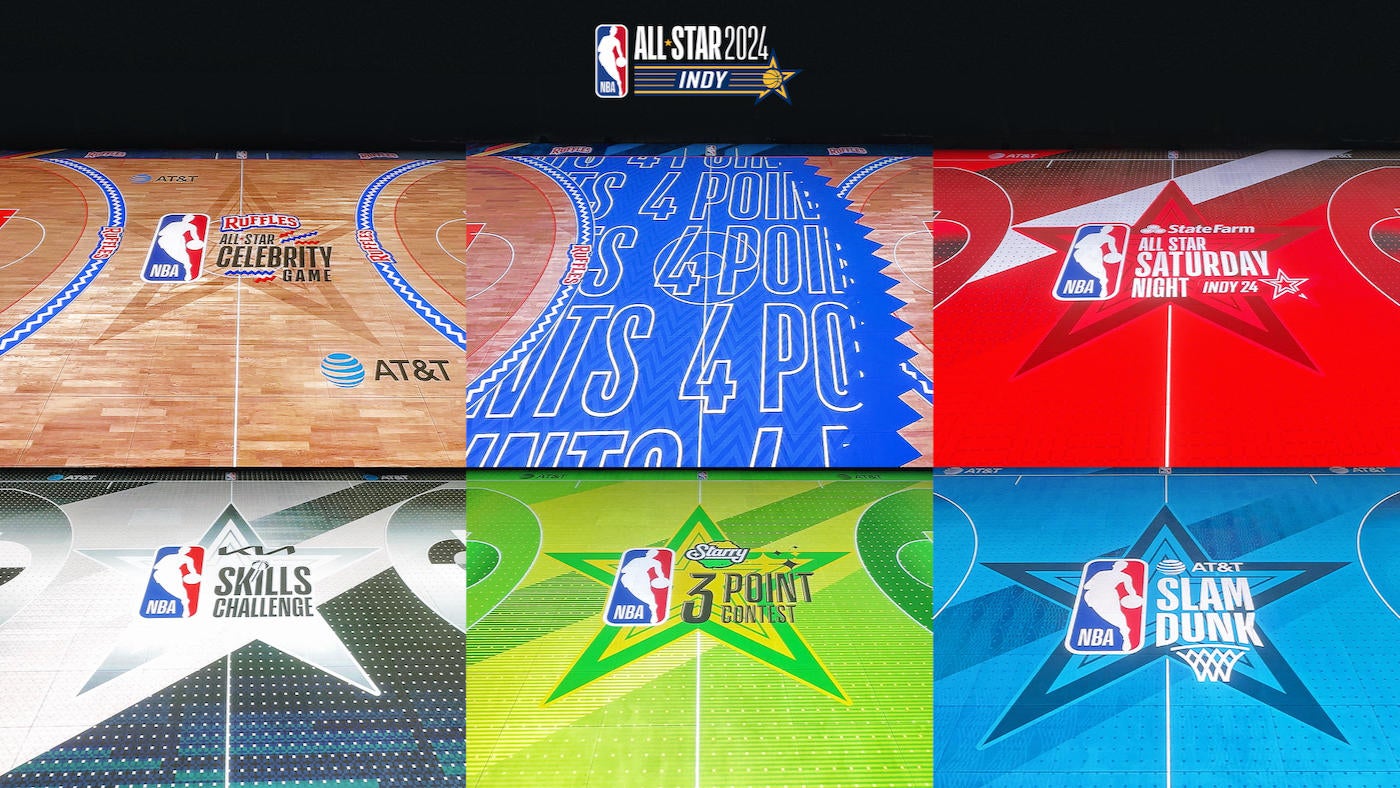
Myers said that the league has been looking into LED courts for eight years or so, but initially "the technology wasn't there yet, so we kind of stayed away. Now the technology is there." There was some buzz after FIBA used the court, and, after testing it, the league felt comfortable going forward.
"The most important part of this is making sure that the surface that the athletes are playing on is safe and has the right grip and the [right] viscosity," Myers said. "And all of these things that we test for on our maple floors, we also have tested for on this surface."
ASB Glassfloor built a four-panel "mini-court" that has been set up in the atrium of the NBA's office in Secaucus, New Jersey. "We've used that to just sort of test and probe and show people -- we actually brought it over to Brooklyn to show players at the Nets, so we've had a bunch of people interact with this to ensure we were on the right path," Christopher Arena, the NBA's head of on-court and brand partnerships, said.
The surface of the court is two layers of safety glass, each 5 millimeters thick, laminated together. "It's not like looking out your window and you can see through it; it's actually opaque but allows the LED to shine through," Arena said. "And then burned into the glass are these ceramic dots, and they're sort of spaced to provide grip and friction, similar [to what] you'd see on a wood floor with an oil- or water-based finish, whatever it may be. And so these panels fall in, with the LED lights below them, and then a special silicon is put on the edges to seal it in." Below that are aluminum "belts" to provide support.
So how similar is this floor to a maple floor, in terms of how it feels and how the ball bounces?
"I would say exact," Arena said. "If not, extremely similar. We did some independent testing just to understand coefficient of friction, force reduction, standard tests that the [Maple Flooring Manufacturers Association] does. And it's similar to all of that. I can tell you when you're dribbling a ball -- and Carlton and I have played a little one-on-one in this little four-panel thing -- it feels the same."
This looks like the basketball court of the future. Do not, however, expect LED courts to become standard in the NBA anytime soon. This court is currently assembled in a warehouse in Indianapolis, where it was installed in about six days. It'll take about two days to install it in Lucas Oil Stadium. Since many teams play in multi-sport, multi-use arenas, that type of lead time would be "essentially impossible" during the regular season or even the playoffs, Arena said. "But if it's an event, an In-Season Tournament, a game played overseas, a neutral-site type of thing, where we can control the beginning and the end, that's probably more viable. And who knows? Maybe in the future ASB has figured out a way to make the install faster and the deconstruction faster."
There is "huge potential for how we could use this floor in the future," Myers said.














